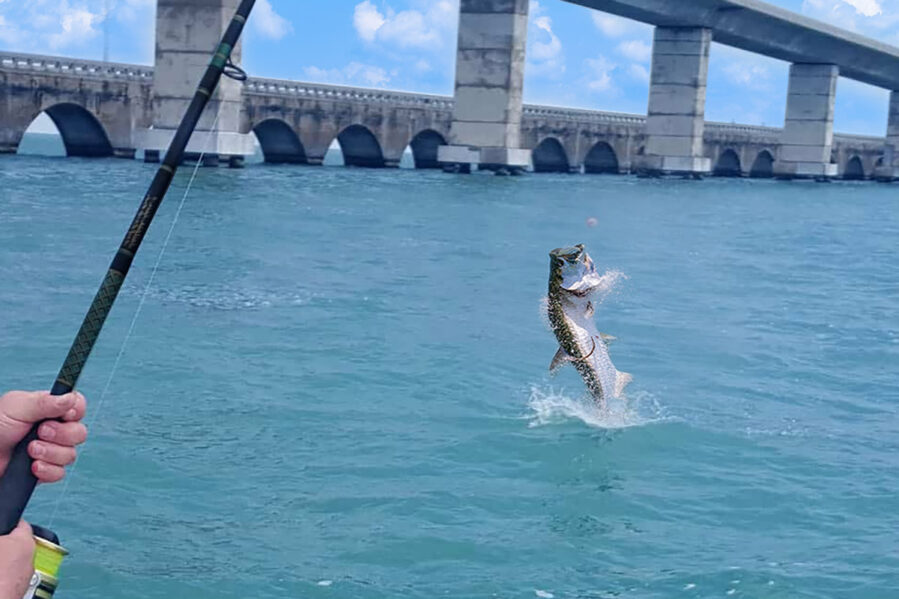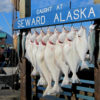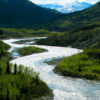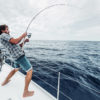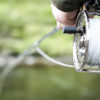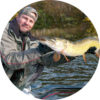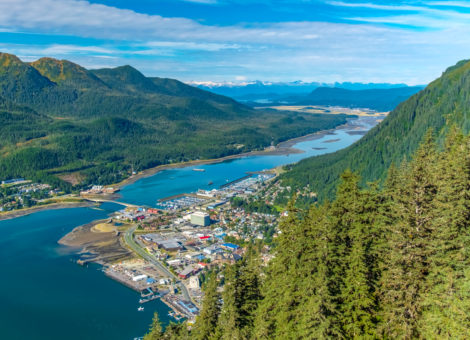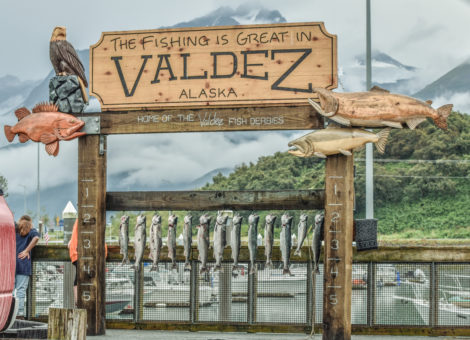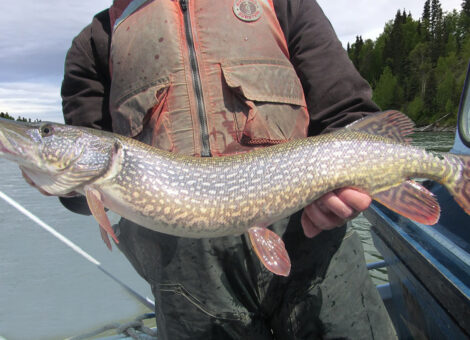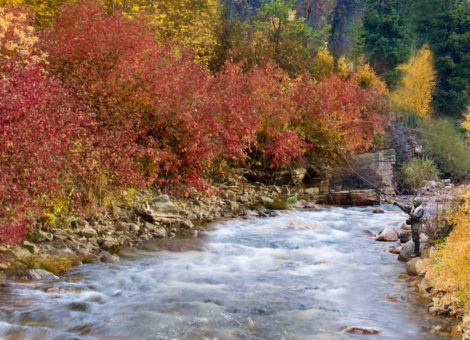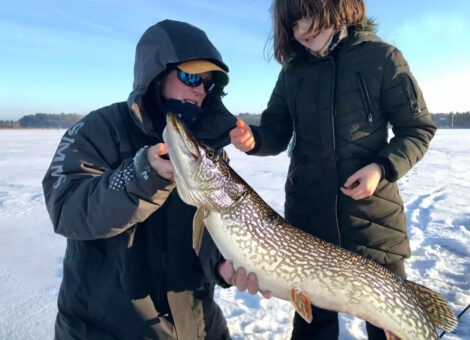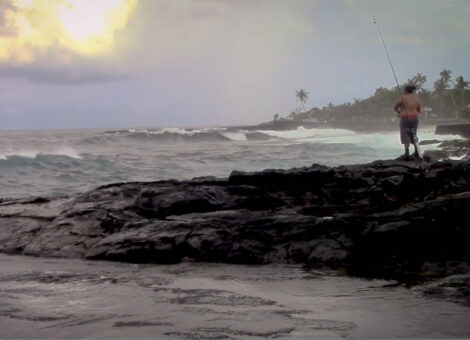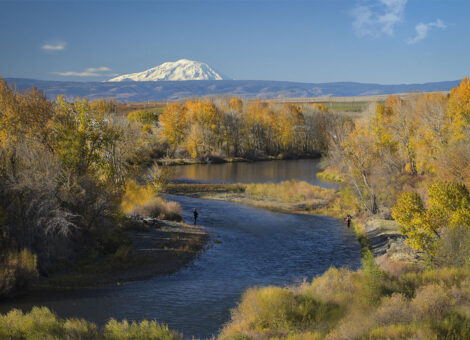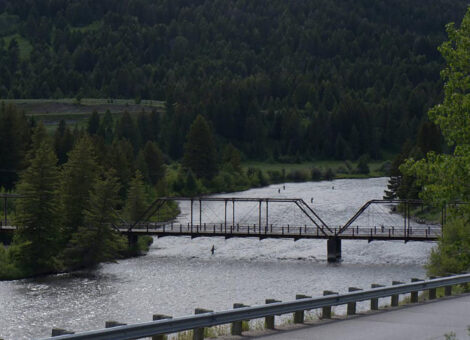There’s nothing quite as exhilerating as hooking a torpedo-size tarpon… and there’s no place like the coast of Florida to find these spectacular gamefish. From the world-famous Boca Grande lagoons to the lush grass flats of the Keys, to the pristine waters of Homosassa, Florida offers some of the best tarpon fishing on earth… in the most breathtaking scenery imaginable.
But before your jump in your car, or catch the next flight Florida to wet your line, it’s important to plan ahead. Knowing where and when to go fishing is imperative when it comes to catching tarpon.
In this guide we will walk through all of the best tarpon fishing spots in Florida starting with the Alantic coast of the Florida peninsula, working our way south through Biscayne Bay, then west to the Florida keys, and finally up the Gulf coast toward the Florida Panhandle… then we’ll tell you the best time to go.
The following map shows the relative availability of tarpon for Florida’s Atlantic Coast, Gulf Coast and southern waters including the Everglades and Florida Keys. To browse top tarpon fishing spots, select a region below.
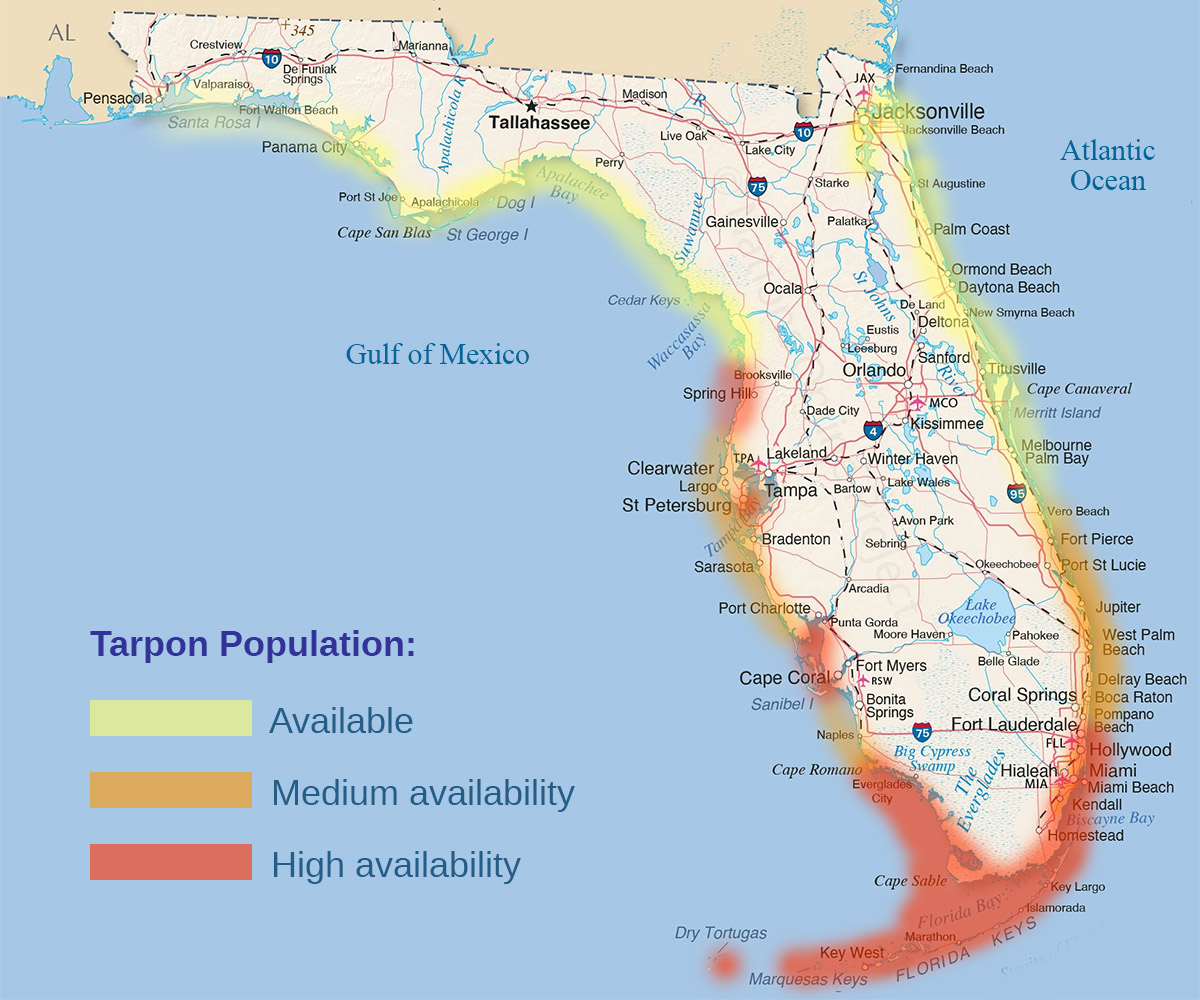
To learn more about a specific tarpon fishing spot, or to get directions, review the location markers and coordinates on the following map.
Tarpon fishing along Florida’s Atlantic Coast
The eastern coast of the Florida peninsula provides hundreds of miles of prime tarpon fishing. Tarpon can be fished as far north as Jacksonville, but the real action doesn’t begin until you head south toward Miami.
The inland and open waters of Miami are abundant with juvenile and adult tarpon ranging from 10 to 150 pounds. Peak season for tarpon fishing is February through May, but fishing doesn’t pick up until March.
Indian River
If you’re going to fish the Atlantic coast of Florida, make sure to visit the Indian River Lagoon. The Indian River lagoon and connecting bays, channels, and canals host abundant populations of tarpon. It runs from Ponce Inlet in New Smyrna south along the coast to Jupiter Inlet.
Tarpon can be a little challenging to catch in the Indian River as they’re constantly moving around in search of prey. They’re rarely laid up in one stop and it takes some active fishing to get them on your hook.
Tarpon can be caught using live crabs, mullet, pinfish, or shrimp. Artificial lures such as soft plastics, jigs, and plugs fished a heavy spinner rod also works well in the Indian River.
When fishing Indian river backwaters, tarpon are better targeted using flys due to the subtle presentation of fly fishing and small fly sizes. Fly patterns that imitate mullet, shrimp and local preyfish are most effective.
The Indian River Lagoon is an popular local for kayak fishing and sight fishing.
Mosquito Lagoon
The Mosquito Lagoon preserve is part of the Indian River System and is located between Dayton Beach and Titusville in Florida’s Brevard and Volusia counties.
Mosquito lagoon offers excellent tarpon fishing but the fish here are on the smaller side. Expect your average catch to be between 10 to 20 pounds, with an occasional 50 pounder. Catches of over 100 pounds aren’t unheard of, but they’re rare.
Fly fishing is one of the preferred methods for targeting in tarpon on the Mosquito Lagoon. Fly fishing for tarpon isn’t for the faint of heart. Even small specimens will give you a run for your money once hooked.
Make sure you have the right gear and you’re comfortable using it. To hook tarpon here you need to be able to get your fly out a good 50 feet. And again, once you hook a tarpon be ready for a fight.
Most tarpon are caught at the northern end of the lagoon. Fish the outside edges of channels, the mangroves and backwater holes. Tarpon can be fished year-round in the lagoon. Large tarpon move to the deeper bays and backwaters during the heat of summer.
Ponce Inlet
Unquestionably, one of the better spots in Florida to wet your line if you’re looking to hook a tarpon. Ponce Inlet is located just north of Mosquito Lagoon and is a great stop if you’re going to be fishing in the area.
Tarpon are quite active in Ponce from January through September, although like most of Florida, you can hook a tarpon here most of the year. During the spring and summer migration, Ponce Inlet draws large pods of tarpon as they migrate south along the coast.
Blue and bass crabs, along with mullet, and shrimp are the preferred bait for targeting tarpon in Ponce Inlet and along this stretch of the Florida coast. You’ll find both juvenille and adult tarpon throughout the backwaters of the inlet.
The average size tarpon is on the smaller side when compared to other fishing spots but catches in excess of 50 pounds are common.
Miami
As we move down the coast toward Miami, tarpon fishing really picks up. You’ll find hungry silver kings (tarpon) just about anywhere you cast your line—bays, inlets, canals, and even coastal freshwater lakes.
Peak fishing season Miami runs January through July, but fishing really picks up in the Spring. You’ll find smaller juveniles in the backwater canals year-round. Open waters is where you’ll spot larger pods of tarpon and a few giant silver kings in the 60 to 120 pound range.
You’ll also find land-locked tarpon in the lakes surrounding the airport. They come in on high tide through the lock systems and get stuck inland when the locks close. At night, there are even opportunities to tarpon fish from downtown Miami.
Known for their spectacular jumps, Miami tarpon put up quite a fight and put on quite show once hooked. They’re nothing like the image of monster tarpon jumping through the air with the Miami Skyline in the background.
Government Cut
Think of Government Cut as a fishing suburb of Miami. Government Cut is located at the south end of Miami between South Beach and Fisher Island. The tarpon fishing here is somtimes good, and sometimes not as good—but when it’s good, it’s great.
One the best hot spots for tarpon fishing during peak season is at the mouth of Government Cut before entering the main shipping channel. The tarpon here aren’t huge, but they’re not small either. You can expect an average catch to be in the 30 to 50 pound range.
The key to catching tarpon in Government Cut is to follow the baitfish. When there’s something to eat, the tarpon move in. From December through April shrimp runs draw in schools of tarpon to feed, while mullet runs in the fall draw them back for seconds.
Biscayne Bay
The pristine waters and sprawling flats of Biscayne Bay and Biscayne National Park just south of Miami provide excellent tarpon fishing.
During the shrimp runs between January and March, tarpon fishing is especially good. Mid-size 30 to 50 pound tarpon move in around the bridge pilings and channels to feast on this rich protein buffet. Night fishing around the bridges and along the shadow lines created by the lights is one of the most effective and satisfying techniques for fishing the bay.
During the summer—from June through August—Biscayne Bay supports a second fishery of slightly smaller tarpon in the 10 to 30 pound range. Light tackle and gear works fine for these smaller fish.
In Biscayne Bay, tarpon can be fished by casting live bait, fly fishing or spinning with artificial lures—but sight fishing is the most rewarding way to fish the bay.
A few spots I recommend for sight fishing and fly fishing are Boca Chita, Soldier Key, Sands and Elliot Key. These areas have grass flats with clear water similar to those found just south in the Florida Keys.
St Augustine
From June through September, St Augustine offers superb tarpon fishing. Tarpon fishing the rest of the year is really hit and miss.
During tarpon season, larger tarpon can be found in the waterways surrounding St Augustine including the mouth of Matanzas River and St Augustine Inlet. Juvenile tarpon are more common in the tannin stained backwater channels. Adult tarpon will occasionally work their way up larger rivers, but typically stay in the bays and inlets closer to the Atlantic.
Tarpon in St Augustine can be taken using spoons and jigs that are trolled or drifted off a boat. Live bait fishing using mullet or pinfish under a cork is also popular.
Jacksonville
Tarpon season in Jacksonville runs from June through September. Your best chance of hooking a nice size tarpon is going to be during peak season from July through August. You can slow troll the open water, fish from the beach, or hit the inlets. During shrimping season cast your line from the Mayport Little Jetties where tarpon gather behind shrimp boats for a free meal.
In addition to Mayport, other areas that are known to have tarpon include Amelia Island’s Nassau Sound and St Johns River Inlet. At Nassau Sound the tarpon like to hold to the bridges (e.g “George Grady” fishing pier), deep slougths and shallow bars. St Johns river Inlet, at the south end of Jacksonville, provides great tarpon fishing in good years.
The best time to fish Jacksonville for tarpon is when the schools of mullet and other baitfish are most abundant, which is at the hottest time of the summer. When mullet are running you’ll find tarpon in the inlets, channels, beaches and open water.
Stuart
Stuart is located at the south end of the Treasure Coast where the St Lucie River and Indian River Lagoon converge—and where some of the best tarpon fishing is to be had during late spring and summer. During the fall mullet run starting in September tarpon fishing swings into full gear again as tarpon move in to fill their bellies on fresh baitfish.
There are several fishing techniques that will work to hook tarpon, but free-lining or trolling live mullet around Stuart’s inlets and bridges at night is a favorite. Fly fishing during the summer months is one of the popular methods for catching tarpon.
The tarpon inhabiting the waters surrounding Stuart range from 10 to 150 pounds. Smaller tarpon are going to be found inland. Larger tarpin inhabit deeper bays, water ways and coastal waters.
Other top tarpon fishing spots along Florida’s Atlantic Coast:
- Soldier Key
- Boca Chita
- Sands
- Elliot Key
- Port Everglades
Tarpon Fishing in the Florida Keys and Everglades
The southern Florida coast—encompassing the Florida Keys and Everglades—is without question the most popular tarpon fishing grounds in the northern hemisphere. Anglers from across the globe flock to these waters every year to wet their line and have the chance to catch a giant tarpon.
The Florida Keys boast some of the most productive tarpon fishing in Florida. Tarpon catches average between 30 and 70 pounds, and giant tarpon in these waters can break 200 pounds. If you’re looking to hook a monster, May and June are when you want to plan your trip.
As tarpon migrate from the Keys up Florida’s western coast they make their way through the thousand of backcountry waterways, channels, and islands of the Everglades. Where the waters of the Keys are relatively clear, the Everglades are ladened with tannin making the water a bit darker.
Low visibility, combined with abundant baitfish, makes fishing the everglades one of the easier places to hook a tarpon.
Islamorada
When it comes to tarpon fishing, it doesn’t get any better than fishing the open waters off Islamorada in the Florida Keys. Large pods of tarpon migrate through the bays, channels and waterways surrounding Islamorada from April through June. Most anglers that have fished these waters during tarpon migration will tell you the fishing is nothing short of epic.
While peak season for fishing tarpon is April to June, Islamorada offers pretty good tarpon fishing year-round due to is location in the middle annual migration routes. Large tarpon pods are found in the open waters on the Atlantic side of the island, as well as the backcountry flats and channels on the Gulf side.
Many of the same techniques for fishing tarpon elsewhere in Florida will also work in Islamorada. A few popular approaches for targeting tarpon off Islamorada include sight fishing in the shallows, fly fishing the grass flats, and drift fishing in the deeper lagoons and open water. Simple cast and retrieve methods will also get the job done if have a good presentation and bait.
Most of the surrounding channels, flats and isles such as Buchanan Bank—east of Islamorada—offer excellent tarpon fishing. A few nearby hotspots for tarpon include Seven Mile Bridge and Channel Bridges.
Key West
Key West is home to natural reefs, shallow flats, deep bays and breathtaking backcountry teeming with tarpon. It is one of the few year-round tarpon fisheries in Florida where you can always expect to get a bite.
Tarpon season in Key West runs from April through June. The most productive months for tarpeting big tarpon are May and June when tarpon migration is at it’s peak. If you’re going to plan a fishing trip to the lower keys, these are the months I’d recommend.
If you can’t make it down during peak season, late summer and early fall are a great time of year for flats fishing in Key West’s back country for juveniles. These fish will be a bit smaller—in the 15-30 pound range—but they’ll still put up a monsterous fight.
As waters cool in late October and early November, tarpon head to deeper waters. You can still catch them but you’ll need to target them with live baits using bottom fishing techniques such as jigging or drift fishing.
Key West is the gateway to several other pristine tarpon fisheries such as the Marquesas Keys and Dry Tortugas—both accessible by boat.
Marathon
Marathon is an epicenter of fishing activity. Each year thousands of tarpon pass through Marathon during their annual migration. Drop your line near any one of a dozen locations around the isle and you’re likely to get a bite.
One of the favorite tarpon fishing spots during the summer months is Seven Mile Bridge. Here you’ll find giant tarpon. Anglers typically anchor up current from the bridge piling and fish the current using jigs, small slip sinker rigs, or bait. For your best chance at hooking a monster tarpon fish near Moser Channel. The water is deeper there and tarpon are abundant.
When you anchor up current, make sure to use a quick release line that allows you to unhook from your anchor as soon as you get a bite. You need to be able to unhook quickly to pursue the hooked tarpon. When fishing the current use large bait, like mullet and big blue crabs.
Key Largo
Key Largo is another hot spot for tarpon activity that provides anglers excellent fishing from March through April. You’ll continue to find some larger tarpon lingering around the bridges through out the summer. A Key Largo fishing hot spot is Alligator Reef Light House. Come September there’s another smaller run of tarpon that dies down in October.
Other top tarpon fishing spots in the Florida Keys and Everglades (in no particular order):
- Bahia Honda (Bridge)
- Channel Bridge #2
- Channel Bridge #5
- Spanish Harbor Channel Bridge
- Long Key Bridge
- Seven Mile Bridge
- Snake Creek Bridge
- Hawk Channel (Islamorada)
- Boca Chica Channel Bridge (great night time fishing)
- Duck Key
- Sombrero Reef (Marathon)
- Alligator Reef Light House (Key Largo)
- Buchanan Bank
- Sugarloaf Key (backcountry)
- Big Pine Key
- Jack Bank
- Plantation Key
- Everglades City
- Chokoloskee Island
- Sandy Key Basin
- Rabbit Key
- Lostman River Mouth
- Harney
- Lake Ingraham Canals
- Port Everglades
- Tom’s Harbor Cut Bridge
- Key West Harbor
Tarpon Fishing along Florida’s Gulf Coast
Tarpon range from the Florida Keys and Everglades up the west coast all the way to Pensacola. Tarpon fishing is most productive in the southern reaches of Florida’s west coast, but tarpon can be had just about anywhere you drop your line during migration.
Some of the more productive tarpon fishing grounds along Florida’s Gulf coast include Apalachicola Bay, Homosassa, and the open waters surrounding Ft Myers. Fishing from boat is the most effective way to land a tarpon, but Florida’s Gulf coast also provides multiple access points to fish from shore.
Apalachicola Bay
Apalachicola Bay is a hot spot of tarpon activity every May when annual tarpon migrations hit their stride. This is one fishing destination along the northwestern coast of Florida that can compete with other tarpon fishery in terms of sheer volume and size of tarpon.
Tarpon fishing in Apalachicola Bay gets underway in mid-May and lasts throughout the end of August. Fishing for tarpon in Apalachicola outside of peak season is hit or miss—and if you do get a bite it’s likely to be a small one.
Apalachicola Bay, and the surrounding waters of the “Forgotten Coast” provide some of the most pristine and untouched flats in Florida’s coastal waters. The entire area of the Forgotten coast incorporates over 200 square miles and includes Saint Joseph Bay, St. George Sound, St. Vincent Sound, East Bay, and Apalachee Bay.
During peak tarpon season, Indian Pass—located at the extreme west end of Apalachicola Bay near the Gulf of Mexico—is a fishing hot spot for the baitfish tarpon feed on, and the tarpon are in hot pursuit. Wet your line here and you’ll likely to reel in a large one.
The flats around the islands on the south side of Apalachicola Bay offer some exciting sight fishing opportunities for fly fishing and bait anglers alike.
Tampa Bay
Tampa Bay is the largest open-water estuary in Florida and one of the top tarpon fisheries along Florida’s gulf coast. With hundreds of square miles of fishable area, you could spend a lifetime here and never fish the entire bay. Tampa Bay is full of inlets, isles, channels and flats that are home to vast array of gamefish and tarpon.
Each year between the beginning of May and 3rd week of July large migrating tarpon flock to Tampa Bay by the thousands. You’ll find tarpon throughout much of the bay during the annual migration, but the hot zone for tarpon fishing is at the south end of the bay around Anna Maria Island extending from Bean Point Pass in the north to Longboat Pass in the south.
If you’re looking for some amazing fly fishing action, try Passage Key just north of Anna Maria Island. Passage Key has miles of crystal clear flats that are inundated with migrating tarpon each year. Other hot spots worth fishing include the bay’s mouth near Egmont Key, John’s Pass, Fort De Soto, and Sunshine Skyway Bridge.
During the annual migration, tarpon catches in Tampa Bay average between 70 and 120 pounds, with a few catches above 200 pounds.
Boca Grande
Boca Grande is recognized as one of the top tarpon fisheries along Florida’s gulf coast. Every year anglers are drawn to Boca Grande by the prospect of landing the next world record tarpon. Average tarpon in Boca Grande weigh in at between 80-100 pounds and angler report catching tarpon in excess of 250 lbs.
Peak fishing in Boca Grande is during the height of tarpon migration in May and June. Given the popularity of this fishery, you’ll want to plan your fishing trip well in advance of arriving. If you’re going to charter a boat or hire a guide, best to do so a year in advance. Tarpon season runs from April through July, and many tarpon remain in Boca Grande through October.
A popular fishing spot is Boca Grande Pass. The Boca Grande Pass is deep, and tarpon like deep water. You’ll find a lot of tarpon here if you’re up for some deep water fishing. One of the challenges of fishing deep water is that you can’t see the tarpon, so you’ll have to find them using sonar, by drift fishing or doing a little bit of trolling.
The two predominant methods for fishing Boca Grande Pass are traditional live bait fishing and fishing artificial lures such as jigs and spoons.
Other hot spots near Boca Grande pass include Gasparilla Island, The Lighthouse, and Charlotte Harbor. During the spring, Charlotte Harbor is flooded with tarpon.
Clearwater
Clearwater offers world-class tarpon fishing May through July. As tarpon migrate up from the warm southern waters of the keys to spawn they move into the coastal waters just off Clearwater Beach near Tampa Bay. Some smaller juvenile tarpon can be found in the backwater bays year round, but you’re going to find the larger tarpon in the 80-120 pound range on the coast during peak season.
There are number of passes, bridges and beaches near Clearwater all of which provide good tarpon fishing May through June. Fishing bridges on strong tides during new and full moon phases is most effective. Silver dollar size blue or pass crab is going to be your bait of choice. If crab isn’t available, live mullet, threadfins or pinfish will also hook you some tarpon.
Try slow-trolling jigs and deep-divig lures along the upcurrent side of Sandy Key Pass and Bridge 60. You can also surf fish the Gulf side beaches of Clearwater, but you’ll want to do so during early morning or later evening since the area becomes packed with swimmers during the day.
St Petersburg
Tarpon fishing in St Petersburg picks up mid-May and continues through the end of October, with peak season from June to July. As tarpon migrate along the Gulf toward their spawning grounds in the north they swarm the coastal waters and beach fronts of St Petersburg.
One of the nice things about St Petersburg is the array of bays, inlets and flats that provide great habitat for fishing. St Petersburg’s shallow flats are a relaxing and enjoyable place to spend the day sight fishing, casting, or fly fishing for tarpon. Cast your bait or fly in front of a cruising school of tarpon on the flats and get ready for some fun.
The majority of tarpon found inland are going to be in the 50-80 pound range. If you want to catch a monster, fish the coastal waters during peak season when hooking a 200 pound tarpon is within the realm of possibility.
Homosassa
Sometimes referred to as the hidden gem, Homosassa supports a vibrant tarpon fishery unbeknownst to most anglers. While hot spots like Boca Grande, Key West and Tampa start revving up with boats and anglers early May, Homosassa experiences little fishing pressure—if any—throughout the entire fishing season. Homosassa is truly one of the untouched natural fisheries along Florida’s Gulf coast.
Tarpon start arriving in the waters of Homosassa toward the end of May or beginning of June. Compared to the tarpon in other fisheries alongs Florida’s Gulf coast, the tarpon that visit Homosassa are fairly large—which can provide for some epic fishing. Big fish, with small crowds. That’s what the Homosassa fishery is all about.
With its vast grass flats, calm estuaries and backwater fisheries, Homosassa is a fly fisherman’s paradise. It’s shallow waters also provide for some exhilerating sight fishing.
If you’re familiar with Homosassa, renting a boat and going at it alone is doable. If you want a curated fishing experience, using a local charter may be a good idea. Homosassa is expansive enough that using a local guide that knows the area will save you time, and take you straight to the best fishing spots.
Fort Myers
The bays, estuaries and backwaters of Fort Myers support some of the best tarpon fisheries in southwest Florida. Tarpon season in Fort Myers runs from April through July, with the action reaching its peak in May and June. Anglers flock from across the state to this pristine tarpon fishery on a daily basis throughout the entire season, so it’s a good idea to hit the water early before the crowds arrive.
Prime fishing spots within the Fort Myers fishery include the waters off Sanibel Island (including Tarpon Bay), Captiva, Pine Island, Matlacha and Boca Grande just a short boat ride to the north. Tarpon can be fished in these areas year round, but don’t arrive in numbers until the water temperature reaches 75 degrees Fahrenheit.
As water temperatures cool toward the fall, big tarpon move to deeper waters off the coast, making them more challenging to find and fish. Anglers must adapt their fishing methods and techniques to pull these monsters from the deep. Ideally, you’ll want to plan your tarpon fishing trip to Fort Myers sometime between the early spring and fall.
If you’re not familiar with the Fort Myers area and waters, its well worth the investment to hire a fishing charter for the day. It’s a bit more pricey up front, but will save you headache, time and ensure an enjoyable fishing experience.
Destin
Destin provies a world-class tarpon fishery that offers anglers the opportunity to reel in monster tarpon. Anglers often overlook Destin in search of they would consider more fertile tarpon fishing grounds. But truth be know, tarpon fishing in Destin is about as good as it gets—as long as you fish during peak migration season.
Most of the inland and offshore waters surrounding Destin provide good tarpon fishing. You can catch tarpon year round in Destin, but the fishing tends to be best during the annual tarpon runs. Larger tarpon will be found just off shore. Smaller, juvenile tarpon are typically found inland.
Crystal River
As its name suggests, the Crystal River is known for its crystal clear waters that provide high visibility and a fishing experience like no other. The Crystal River provides an ideal habitat for tarpon and angler alike. Tarpon are often found feeding along the mangroves lining the shorelines of vast shallow flats along the river’s edges. Sight fishing—using either fly fishing and casting techniques—is the method of choice.
To target larger tarpon, fish the deeper channels and drop-offs scattered throughout the river. Channel fishing is a big more challenging that flats fishing and requires a little experience. If you’re a beginner angler, looking for an all around good time, I recommend sticking with the flats. Whether you fish the deeper water or stick to the shallow flats, Crystal River doesn’t disappoint.
Tarpon Springs
It should come as no surprise that Tarpon Springs offers some of the best tarpon fishing along Florida’s Gulf coast. In fact, Tarpon Springs was named after the “Silver King” that put this city on the map. Tarpon springs is home to some of the largest saltwater estuaries in the world and is know for its vast shallow flats and superb inshore fishing.
Peak Tarpon season runs from May through July, and that’s when you can expect the waters on Tarpon Springs to have the most fish and experience the highest fishing pressure. Anglers from all over the country flock to this city to try their hand at what some deem the best Tarpon fishing in Florida.
If you have your own boat, bring it. If not, there are plenty of boat rentals and charter companies that can get you on the water. With ample amount of grass flats and backcountry water, using a kayak is also fun way to experience Tarpon Springs and reel in a fish or two. Just remember, tarpon are vigorous opponents. If you decide to fish from a kayak, you’ll need a good sense of balance.
A few local hot spots for fishing Tarpon include Anclote River and Gulf Harbors.
Other top tarpon fishing spots along Florida’s Gulf Coast:
- Carrabelle
- Alligator Point
- Lanark
- Panama City
- Egmont Key
- Anna Maria Island
- Passage Key
- Sunshine Skyway Bridge
- John’s Pass
- Fort De Soto
- Siesta Key
- Boca Ciega Bay
- Sarasota Bay
- Saint Joseph Bay
- Cap San Blas
- Panama City
- Shell Key Channel
- Port St Joe
- Cedar Key
- Indian Pass
- Bean Point Pass
- Longboat Pass
- Lemon Bay
- Pine Island
- Captiva
- Sanibel Island
- Naples/Marco Island (flats fishing)
- Anclote River
- Gulf Harbors
Best Time to Tarpon Fish in Florida
For tarpon fishing in Florida, when you fish is just as important as where you fish. The best time of year to fish for large migratory tarpon is when water temperatures reach and remain above 75 degree Fahrenheit. This generally occurs as early as mid-March and lasts through the beginning of fall.
Peak fishing season for tarpon along Florida’s Atlantic and Gulf coasts is between April and June. In the southern Everglades and Florida Keys, where water temperatures are typically warmer, peak season begins a little earlier in the year.
Many of Florida’s interior bays, inlets and river systems host smaller tarpon year round.


